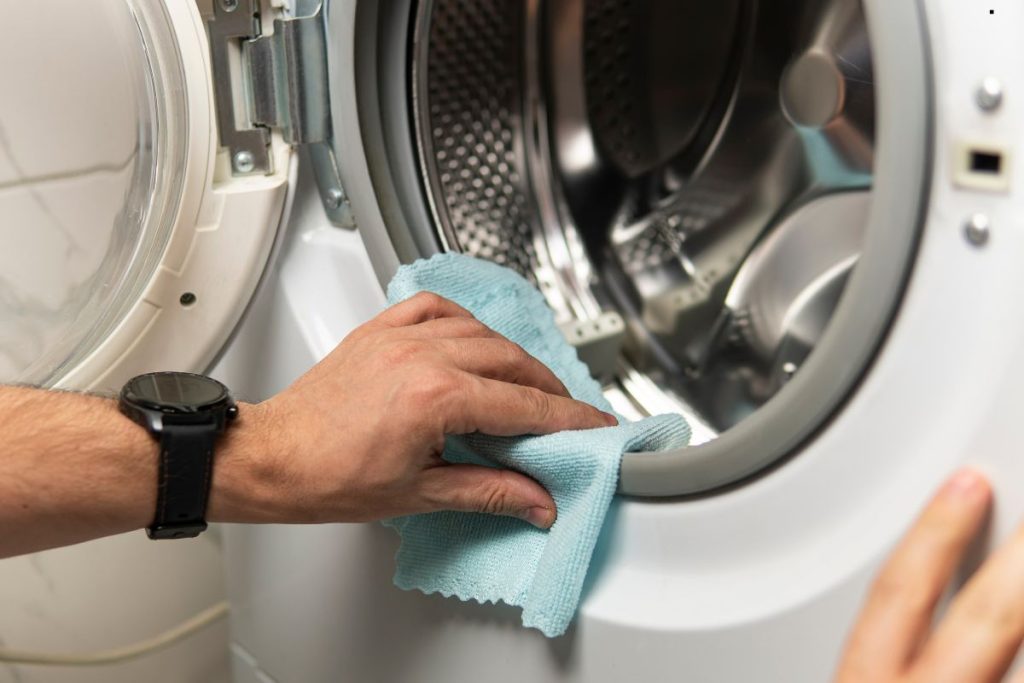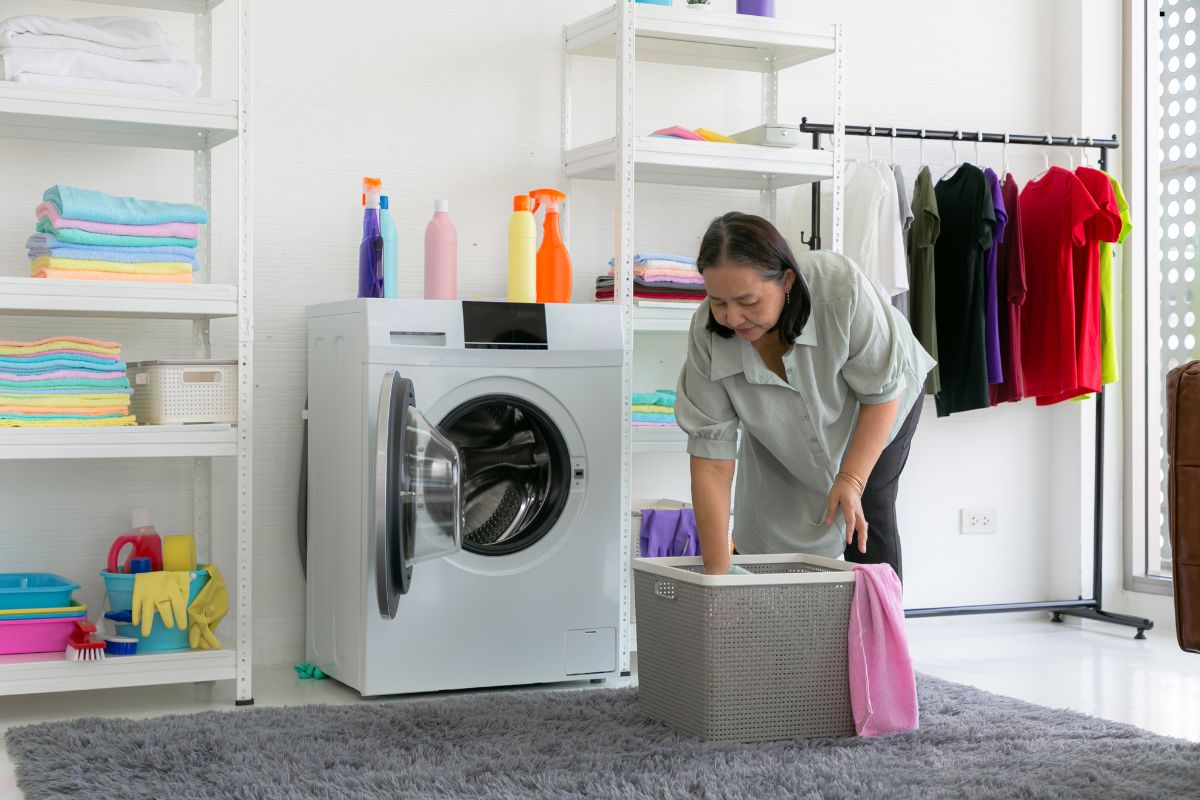
Are you wondering if you’re using too much detergent in your washing machine? The answer is likely yes! Over siding is a common laundry mistake that can lead to residue buildup, inefficient cleaning, machine damage, and even skin irritation. Keep reading to learn how to determine the right amount of soap, spot the signs of overuse, and fix the damage!
1. Introduction: The Hidden Laundry Problem

We all want clean clothes, and the natural instinct is to reach for that bottle of laundry detergent and pour in a generous amount. But what if I told you that more isn’t always better? In fact, using too much soap is one of the most common laundry mistakes, and it can lead to a host of problems you’ve probably never considered. From dingy-looking clothes to a washing machine that smells like a locker room, the consequences of over-surfing can be surprisingly unpleasant. For more laundry tips, check out “Troubleshooting Your Samsung Front Load Washer: A Comprehensive Guide to Error Codes” in our previous blog.
2. Why Less is More: The Dangers of Overusing
Think of your washing machine like a bathtub. If you add too much bubble bath, you end up with a mountain of bubbles that are hard to rinse away. The same principle applies to laundry detergent. When you use too much, the excess soap doesn’t fully rinse out of your clothes, leaving behind a sticky residue. This residue can attract dirt and grime, making your clothes look dull and feel stiff.
Here are some of the downsides of using too much laundry detergent:
- Residue Buildup: Soap residue can cling to fabric fibers, making clothes feel scratchy and uncomfortable.
- Poor Cleaning: Believe it or not, too much soap can actually reduce cleaning effectiveness. The excess suds cushion the clothes, preventing them from rubbing against each other and dislodging dirt.
- Washing Machine Damage: Over time, soap buildup can clog your washing machine’s dispenser, hoses, and pump, leading to costly repairs. [Internal Link: Link to a page on your website about washing machine repair services].
- Allergies and Skin Irritation: Detergent residue can irritate sensitive skin, causing itching, rashes, and other allergic reactions.
- Environmental Impact: Using more detergent than necessary wastes resources and pollutes waterways.
3. How Much Soap Should You Be Using?
The key to clean, fresh laundry is using the right amount of detergent. Here’s how to determine the optimal dosage:
- Understanding Water Hardness: Hard water contains high levels of minerals like calcium and magnesium, which can interfere with detergent’s cleaning action. If you have hard water, you’ll need to use slightly more detergent than recommended. [External Link: Link to a resource explaining water hardness and how to test for it in your area].
- Decoding Detergent Labels (HE vs. Non-HE): HE (High Efficiency) washing machines use less water than traditional machines, so they require a special low-siding detergent. Using non-HE detergent in an HE machine can lead to excessive suds and damage the machine. Always check the detergent label to ensure it’s compatible with your washing machine.
- Using a Detergent Dispenser Correctly: Most washing machines have a detergent dispenser with markings to indicate the correct amount of detergent for different load sizes. Refer to your washing machine’s manual for specific instructions.
4. Signs You’re Using Too Much Soap

Not sure if you’re overusing? Here are some telltale signs:
- Excessive Suds: A mountain of suds in your washing machine is the most obvious sign.
- Clothes Feel Stiff or Sticky: Detergent residue can leave clothes feeling stiff, scratchy, or even sticky to the touch.
- Your Washing Machine Smells: Mold and mildew can thrive in a washing machine that’s constantly exposed to soap residue. [Internal Link: Link to an article on your website about preventing mold in washing machines].
Notice a musty smell coming from your washing machine? That could be a sign of soap buildup and mold growth. Call Us Today for a thorough washing machine cleaning and maintenance service!
5. How to Fix the Damage: Removing Soap Buildup
If you suspect you’ve been using too much soap, don’t panic! Here’s how to remove the buildup and get your laundry back on track:
- Cleaning Your Washing Machine (DIY Methods): Run an empty washing machine cycle with hot water and 1 cup of white vinegar. The vinegar will help dissolve soap residue and kill bacteria. You can also add 1/2 cup of baking soda to the dispenser for extra cleaning power.
- Stripping Your Laundry (The Right Way): Stripping laundry involves soaking clothes in a solution of hot water, borax, washing soda, and laundry detergent to remove accumulated residue. Be sure to research the correct ratios and methods before attempting this process. (Consider adding a disclaimer here, advising caution and suggesting professional cleaning for delicate items). For more information on maintaining your appliances, check out our Laundry Appliance Repair Services
6. Preventing Over-Soaping in the Future
Once you’ve removed the soap buildup, take steps to prevent it from happening again:
- Switch to Liquidness/Detergent Sheets: Detergent pods and sheets are pre-measured, making it easier to control the amount of soap you use. They also tend to be more eco-friendly than traditional liquid detergents.
- Regular Washing Machine Maintenance: Clean your washing machine regularly (at least once a month) to prevent soap buildup and maintain its efficiency.
Want to ensure your washing machine stays clean and performs at its best? Sign up for our annual washing machine maintenance plan! Call Us to learn more about our services.
Conclusion: A Little Change, A Big Difference
Using the correct amount of laundry detergent can make a big difference in the cleanliness, freshness, and longevity of your clothes and washing machine. By following these tips, you can avoid the pitfalls of over-surfing and enjoy cleaner, softer, and more sustainable laundry. For further assistance, feel free to contact us.
